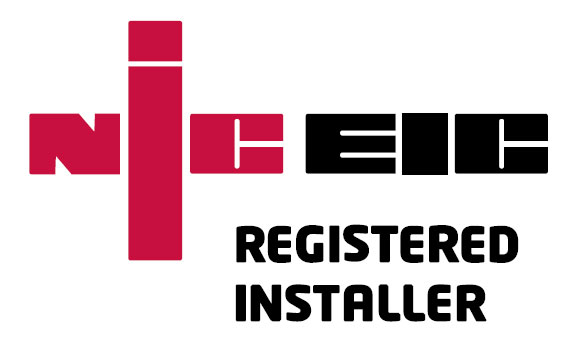Installing MVHR doesn’t mean you automatically comply with ADF(1) regulations (i.e. Part-F). Besides setting mandatory air flow rates for both wet rooms and (now) habitable rooms, ADF(1) compliance requires purge ventilation for ALL habitable rooms, i.e. bedrooms and living spaces. This requirement is normally met by installing openable windows of a certain size aperture, but if you can’t do that for noise, security, safety, or air quality reasons, the purge ventilation must be met by ‘mechanical means’. For MVHR that means potentially delivering ten times more air to certain rooms and extracting the same. Mechanical purge is very different from the normal boost function.
The Part-F completion certificate requires a signed declaration by the installer, a competent person registered with an organisation like the NICEIC who can self-certify the ventilation. If you’re thinking of installing the system yourself then hiring a commissioning engineer at the end of the project, they may not be willing to sign-off the installation if 90% of it is hidden behind plasterboard.
If you do plan to self-install, Solarcrest can send an experienced engineer to site to inspect and sign off the install. Discovering a single, minor issue can save a lifetime of humming, whistling or rattling, so a second pair of eyes is highly recommended. The same engineer will return at the end of the project to set up and commission the finished system. We’ll also check the window apertures required for purge ventilation so we can certify 100% of the ADF(1) Regulations.
Part-F sets a maximum noise limit of 30dB(A) for noise-sensitive rooms (e.g. bedrooms and living rooms). This is equivalent to a whisper. Passivhaus compliance is a little over half a whisper. Noise issues are normally caused by air turbulence from poor ducting design or installation, or from under-specified units thrashing to meet the mandatory flow rates. Vibrational sound transfer from the machine itself should also be mitigated. Acoustic design is our specialty.
Part-L1 states the installed MVHR should consume under 1.5 W/l/s during normal operation. This is easy to test but difficult to fix after installation. Excessive energy consumption is normally caused by poor duct design, leakage in the duct system, convoluted ducting with too many bends, or an under-specified machine. According to the manufacturer, the machine should be able to achieve the minimum ventilation rate while running at 30-40% of its maximum duty capacity. Energy efficient design is another specialty.
Part-A regulations mean you can’t drill holes anywhere. If holes are needed in joists, steels, load bearing walls, or other structural elements, a structural engineer should confirm the integrity of the building is not adversely affected BEFORE installation.
Part-O regulations may require TM59 thermal modelling to prove your property will not overheat. If you’re planning large South or West facing windows or roof lanterns, it would be wise to consider overheating risks before finishing the building design. Solving overheating issues can affect the window, insulation and ventilation design. Your MVHR may need to deliver elevated flow rates without becoming noisy. That additional capacity requires more room for plant and ducting, and that might not be available later. Active cooling through MVHR requires a lot more capacity.
Part-B regulations require fire and smoke protection measures if your property has more than two floors or a habitable basement with no means of escape. Potentially a combination of snap-shut intumescent air valves, fire resisting collars, or motorised dampers potentially connected to your fire alarm. The individual responsible for fire safety should check/approve the design before it’s installed.
The Building Safety Act introduces new regulations that place duties on those who procure, plan, manage and undertake building work of ANY kind. The person for whom the work is being done (often the developer or building owner) must take all reasonable steps to ensure those they employ to work on a project are competent to do that work, and that all building and design work complies with all relevant building regulations.





